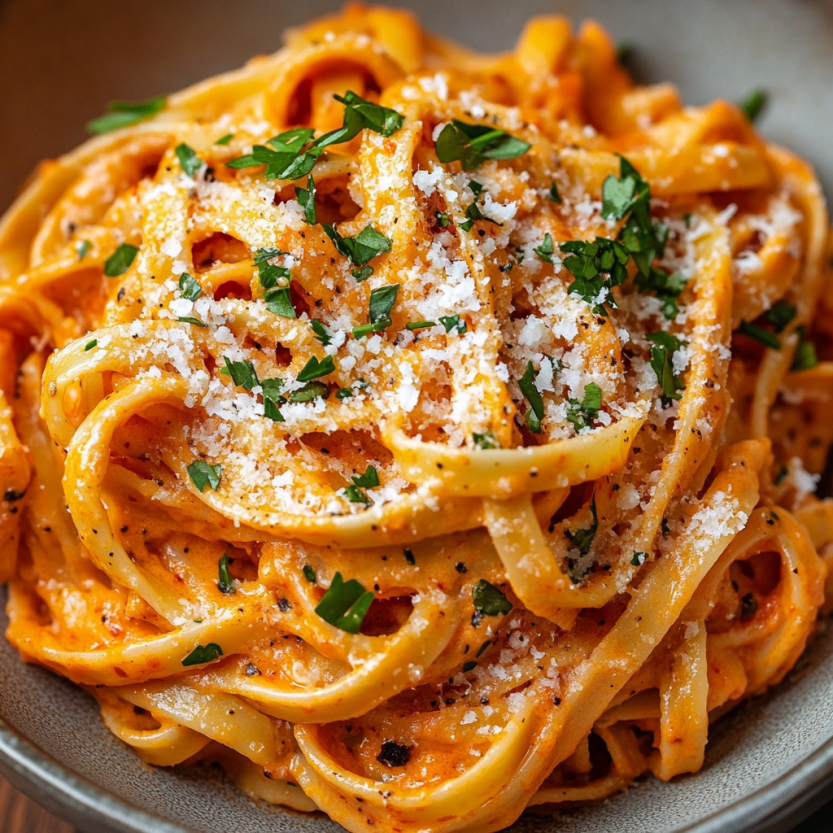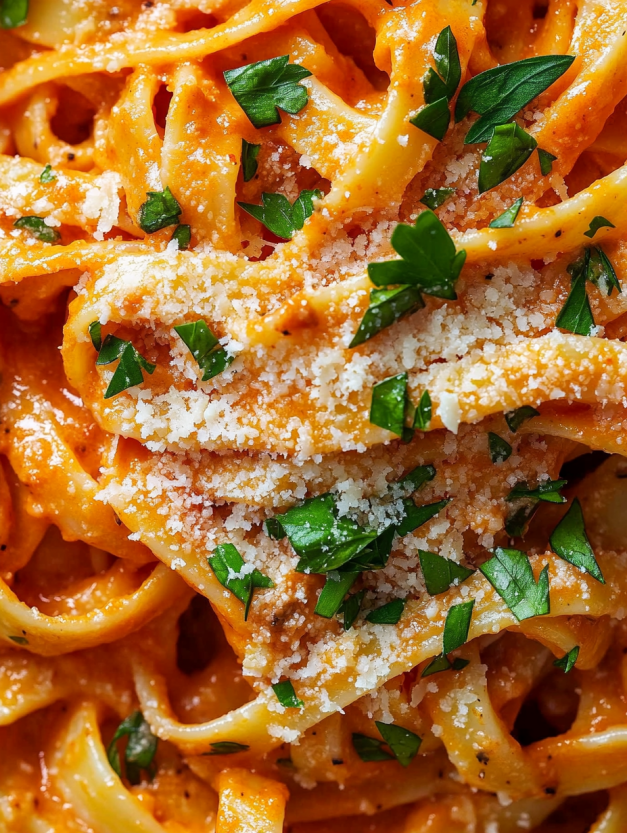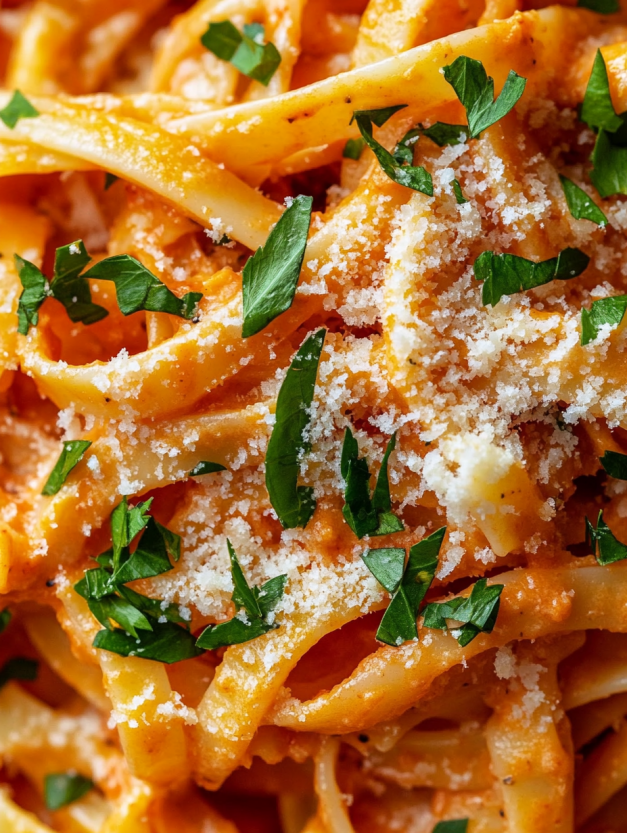 Save
Save
This creamy gochujang pasta is my go-to when I’m craving comfort food with a fiery twist. The bold, savory heat of gochujang blends into a velvety sauce that clings perfectly to each strand of pasta. It’s the kind of dish that feels indulgent but takes barely 25 minutes start to finish — ideal for those nights when you need something fast, but far from boring.
I first made this on a cold evening when I wanted something spicy but soothing and it instantly became a favorite in my house.
Ingredients
- Pasta: about eight ounces of fettuccine or spaghetti is ideal for grabbing the sauce
- Gochujang: about one fourth cup delivers the signature heat and depth look for a paste that lists fermented soybeans as a main ingredient for best flavor
- Heavy cream: about half a cup gives the sauce its silky body
- Parmesan cheese: freshly grated and about half a cup adds nutty saltiness and helps thicken the sauce
- Garlic: two cloves minced to infuse the oil with flavor right from the start
- Olive oil: two tablespoons for sautéing the garlic and blooming the gochujang
- Salt and pepper: to taste for balancing everything out
- Fresh parsley: a handful chopped for brightness and a bit of color on top
Step-by-Step Instructions
- Cook the Pasta:
- Bring a large pot of water to a rolling boil and add a generous pinch of salt. Drop in the pasta and cook according to the package directions until it is just shy of al dente. Before draining reserve half a cup of the cooking water for adjusting the sauce later
- Sauté the Garlic:
- Heat the olive oil in a large skillet over medium heat. Once warm add the minced garlic and stir gently for about thirty to sixty seconds until it becomes fragrant. Do not let it brown to avoid bitterness
- Add the Gochujang:
- Spoon the gochujang into the pan with the garlic and stir well for about one minute. The paste should loosen and release its signature aroma as it melds into the oil
- Make the Sauce:
- Reduce the heat slightly and pour in the heavy cream. Stir continuously as the sauce comes together. Let it simmer gently for about two to three minutes so it can thicken just enough to cling to the pasta
- Combine Pasta and Cheese:
- Add the drained pasta directly into the skillet and toss to coat with the sauce. Sprinkle in the grated Parmesan cheese and continue tossing until every strand is glossy and covered. Add a bit of reserved pasta water if needed to loosen things up
- Season and Serve:
- Taste and adjust with salt and pepper. Serve immediately with extra Parmesan and a sprinkle of chopped parsley for freshness
 Save
Save
Storage Tips
Store any leftovers in a sealed container in the fridge for up to three days. To reheat gently warm on the stovetop or microwave with a splash of milk or cream to bring back the silkiness. Avoid freezing since the cream can separate and affect the texture
Ingredient Substitutions
Swap the cream with coconut cream for a dairy free version. Parmesan can be replaced with a nutritional yeast blend for a vegan twist. If gochujang is too bold for you try mixing in a bit of tomato paste and chili flakes for a milder base
 Save
Save
Serving Suggestions
Pair with a citrusy arugula salad to balance the richness. Garlic bread is a natural sidekick here especially for mopping up leftover sauce. A lightly sautéed green like spinach or bok choy adds freshness to the plate
Cultural Notes
Gochujang is a staple in Korean cooking known for its fermented complexity and gentle heat. Marrying it with pasta draws inspiration from both Korean and Italian traditions. This kind of east meets west fusion has become a delicious trend in many home kitchens
Recipe Questions
- → Can I use milk instead of cream?
Yes, though the result will be less rich. Whole milk is the best substitute for maintaining creaminess.
- → Where can I find gochujang?
You can usually find gochujang in the international section of grocery stores, Asian markets, or online.
- → Is the dish very spicy?
Gochujang adds more depth than heat, with a touch of sweetness. Adjust the amount to control the spice level.
- → What pasta works best with this sauce?
Long noodles like fettuccine or spaghetti work well, or try rigatoni for its sauce-catching ridges.
- → Can I add protein to this dish?
Yes, grilled chicken, shrimp, tofu, or a soft-boiled egg pair wonderfully with the creamy, spicy sauce.
- → How should I reheat leftovers?
Reheat gently on the stove or in the microwave with a splash of cream or milk to restore the sauce's texture.